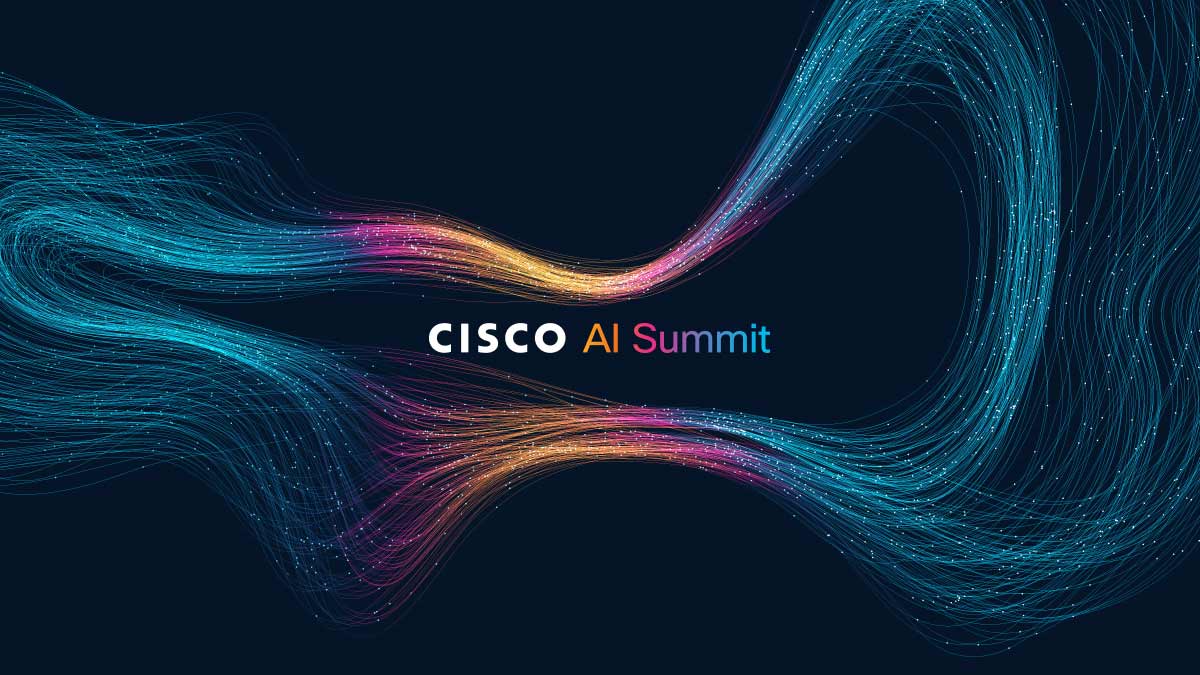Given the seismic shifts of the past few years, work will never be the same. And many organizations are still struggling to find the right hybrid balance — in office? Remote? Or something in between?
As Jeetu Patel said at a keynote address at the Cisco WebexOne 2022 event this week, hybrid work is not easy. Many companies are at odds with their workers’ demands for more flexibility, and still lack the technology for a great hybrid work experiences.
“Free pizza can only get you so far,” he said of the reluctance of many workers to come back to the office. But Patel, Cisco’s EVP and general manager for security and collaboration, believes that everyone should have a great work experience, whether in the office or a thousand miles away. That takes great technology and conscious culture change.
Patel then shared what he called a “staggering statistic.”
“Ninety-eight percent of all meetings will have at least one participant that’s not in the same physical location as everyone else,” he explained. “But what’s really interesting is that only 6 percent of the meeting rooms globally are currently video enabled. That’s a huge disconnect that needs to be addressed.”
The virtual WebexOne event brings together a global collective of innovators, executives, and IT leaders, from within Cisco and without. And this year it highlighted the big challenges in hybrid work, along with the comprehensive ways in which Cisco is solving them.
Patel stressed that hybrid work is essential to success — and not just for so-called knowledge workers. Hybrid work, he underlined, is not going away. So, getting it right will be table stakes for future success in kinds of organizations.
“Hybrid work is different and harder than when most people worked in the office or when most people worked remotely,” Patel said. “It would be a shame frankly to revert back to the way that all of us worked pre-pandemic because we’d lose out so much on the gains we’ve actually made when we were all working from home. We learned how to be more inclusive, how to remove barriers around geography and language and to attract new talent from all parts of the world. And this progressed society in some very profound ways.”
But Patel further emphasized that hybrid work demands a complete rethinking of the work experience. Each organization, he said, needs to approach it from three core areas: reimagined workspaces, flexible workstyles, and security and management.
To that end, Cisco Webex is an exceptionally flexible and secure collaboration tool, with advanced features like real-time language translation. It’s available on any device, and because the future is multi-platform, it’s interoperable with other collab tools like Teams and Zoom. But Patel also spotlighted a far-ranging suite of hardware products to support Webex in the office or at home — all supported by Cisco’s world-class networking and security solutions.
Culture is critical
As important as technology change is, a company’s culture is equally critical to hybrid-work success. And in a breakout session, Cisco’s Fran Katsoudas, EVP and chief people, policy, and purpose officer, met with Adam Grant, an organizational psychologist and bestselling author, to discuss what’s holding many organizations back — and what’s enabling them to succeed.
“I think that a major factor is status quo bias,” said Grant, “that leaders are comfortable with the way they've always done it, and they’re not sure how to manage or collaborate in this much more dynamic world that we're living in.”
Katsoudas pointed out numerous studies show that the more flexible the work culture, the more productive and creative the team.
“I think it’s natural on the one hand for leaders to want control,” said Katsoudas. “Because I think there's an assumption that if you have control, you get to the outcomes that you want. But I think what we understand is that when you’re willing to release that control, it builds trust, it drives better engagement from the team and you get to a better work product. And so, I think we all have to get comfortable with just releasing a little bit of the control that existed in the past.”
But what are successful hybrid teams doing right?
Grant and Katsoudas stressed that leaders need to be highly aware the unique qualities of individuals, teams, and specific work projects. And lead accordingly.
Successful companies, Grant has observed, “are assuming that we’re not going to build a one-size-fits-all solution, and that we may not even build a one team fits all project solution.”
High speed, low latency, in the most demanding places
Of course, technology is at the heart of hybrid work. And Cisco excels in making hybrid work … work.
And who better to explain that than a customer. Zak Brown is the CEO of McLaren Racing, makers of some of the most sophisticated high-speed cars in the world. Webex, he explained, is crucial at every stage, from initial design to the race itself, with secure connections and a great experience for workers, execs, partners, and fans.
“We’ve been hybrid working for some time from a communication standpoint between wherever we’re racing around the world,” he said, “whether it’s China or Australia or Austin, What we hadn’t done before was open that up to our partners, our sponsors, our fan base. Now we’re able to do things like bring our drivers in a very personalized way to talk to our partners and talk to the fans.”
In high-speed, high-profile events, security and low latency are essential elements. So, Cisco and Meraki networking support key elements for McLaren, as well as Webex features like real-time language translation.
“We have 24 different nationalities in our racing team,” he explained. “And the racetrack is a hostile environment. We need to make split-second decisions. So, translation of language is important because we can get stuff wrong through communication. So, we needed a very quick, reliable service, to communicate and not make any mistakes. And so, it’s now all throughout our system.”
Brown also applauded the relationship he and his team have with Cisco, viewing it as a true partnership with built-in co-innovation.
“I think what’s cool is we’re able to work with your engineers and give them feedback,” he continued. “And so, there’s a constant communication; every time you kind of turn on Webex, it seems there’s a new feature.”
That partnership theme carried over into a discussion with Doug Winter, CEO of Seismic, a sophisticated AI-driven sales-enablement platform that helps sales and marketing teams work efficiently and with seamless connectivity. Webex, Winter emphasized, has been a boon to success.
“Sellers need to be able to respond very quickly,” Winter said, “and they need to do it from wherever they are. That’s almost always happening today through a Webex meeting, not in a face-to-face environment.”
Winter also applauded Cisco’s devotion to partnerships and its open-sourced strategy around application programming interfaces (APIs) and software-development kits (SDIs), all of which enabled his teams to share feedback and co-innovate.
“Everything’s evolving very quickly,” he said, “and AI is becoming bigger part of what Cisco is doing, and a bigger part of what we’re doing. The needs of yesterday and the needs of tomorrow aren’t the same. So really, the partnership and the willingness to listen to us and work with us has been invaluable.”
Power and security, at the network level
Behind those great work and collaboration experiences is a great networking and IT experience. Jonathan Davidson, EVP and general manager for Cisco networking, spelled out how Cisco solutions like Cisco Spaces, the company’s cloud platform for hybrid-work management platform combine full-stack observability solutions to create the visibility and simplicity that empower IT in the hybrid-work space.
“When the Webex experience is powered by Cisco,” he said, “managing collaboration and scale is so much better. Connectivity is great, but when there’s a problem, it needs the visibility to address it because you can't fix what you can’t see. The integration of ThousandEyes and Intersight into Webex Control Hub empowers it to proactively identify where issues may occur, all from one place with the ISP and the network or with the application.”
In short, Cisco is preparing businesses for the future, by building in the security, resilience, agility, and great experiences that hybrid work demands.
“It’s incredibly powerful,” Davidson concluded. “We want to make it simple for IT to operate their networks and applications because if the IT experience suffers, the user experience suffers. And nobody but Cisco can provide this level of visibility, insight and action. It takes a powerful secure network, a suite of devices and software to help us connect, and full visibility into what’s happening no matter where employees are working. With the breadth of a Cisco portfolio, Cisco Spaces plus Webex, plus Catalyst plus Meraki plus ThousandEyes and more, we are helping businesses modernize for the future.”
###




